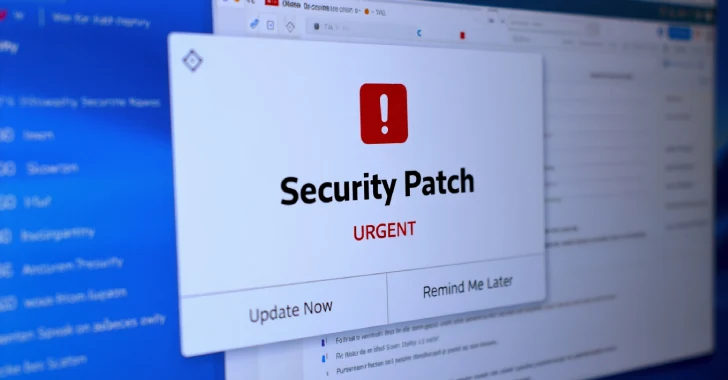
Microsoft Releases Urgent Patch for SharePoint RCE Flaw Exploited in Ongoing Cyber Attacks
The digital battleground intensifies for organizations relying on Microsoft SharePoint Server. Microsoft has just released an urgent security patch to address a critical remote code execution (RCE) vulnerability that is actively being exploited in the wild. This comes amidst revelations of ongoing cyberattacks targeting on-premises SharePoint deployments, highlighting the immediate need for protective measures.
Understanding the Immediate Threat: SharePoint RCE Exploitation
The core of this urgent update addresses a serious vulnerability within Microsoft SharePoint Server that allows for remote code execution. This means an attacker, under certain circumstances, could run malicious code on a vulnerable SharePoint server without prior authentication. The critical aspect here is that Microsoft explicitly stated they are “aware of active attacks targeting on-premises SharePoint Server customers by exploiting vulnerabilities partially addressed by the July Security Updates.” This confirms that threat actors are actively leveraging this flaw, making patching a top priority.
While the specific CVE number for the actively exploited RCE vulnerability was not explicitly detailed in the immediate release, it is deeply concerning that it was “partially addressed by the July Security Updates,” implying an ongoing struggle to fully contain the threat. This iterative patching approach underscores the sophistication of the attacks and the challenge in completely eradicating the vulnerability with a single update.
Beyond the RCE: Another SharePoint Vulnerability Addressed
Beyond the actively exploited RCE, Microsoft also took this opportunity to announce that another SharePoint vulnerability, whose details remain unpublicized, has been addressed with “more robust protections.” This suggests a broader effort to harden SharePoint against emerging threats and close potential attack vectors that may have been less urgent but equally significant in the long run. The continuous release of patches and updates reflects Microsoft’s commitment to improving the security posture of its products, but also the persistent advancements in attacker methodologies.
Impact of On-Premises Exploitation
Organisations utilising on-premises SharePoint Server deployments are at particular risk. Unlike cloud-based services where security updates are typically managed by the provider, on-premises systems require active intervention from internal IT and security teams. A successful RCE exploitation on a SharePoint server can lead to:
- Data Exfiltration: Sensitive organizational data stored within SharePoint could be compromised.
- System Compromise: Attackers could gain a foothold within the network, leading to further lateral movement and compromise of other systems.
- Disruption of Services: Malware or ransomware deployment could cripple business operations.
- Reputational Damage: Data breaches and system downtime can severely damage an organization’s reputation and customer trust.
Remediation Actions: Patch Immediately
Given the active exploitation, immediate patching is not optional; it is imperative. Organizations must apply the latest security updates released by Microsoft without delay. For those managing on-premises SharePoint Server instances, the following actions are critical:
- Apply All SharePoint Server Security Updates: Download and install the latest security updates for your specific SharePoint Server version from the Microsoft Update Catalog or through your standard update management process. Prioritize updates that address RCE vulnerabilities.
- Perform Vulnerability Scanning: After patching, conduct thorough vulnerability scans of your SharePoint environment to confirm the patch has been successfully applied and no new vulnerabilities have been introduced.
- Review Logs for Suspicious Activity: Scrutinize SharePoint server logs, web server logs (IIS), and network logs for any indicators of compromise (IoCs) that pre-date or coincide with the patch release. Look for unusual access patterns, file modifications, or PowerShell execution.
- Implement Least Privilege: Ensure that service accounts and user accounts interacting with SharePoint operate with the principle of least privilege, reducing the attack surface even if a compromise occurs.
- Network Segmentation: If possible, segment your SharePoint environment from other critical network assets to contain potential breaches.
- Regular Backups: Maintain robust and tested backup and recovery procedures for your SharePoint data and configurations.
Relevant Tools for Detection and Mitigation
| Tool Name | Purpose | Link |
|---|---|---|
| Microsoft Update Catalog | Source for official Microsoft security updates. | https://www.catalog.update.microsoft.com/Home.aspx |
| Nessus | Vulnerability scanner for identifying unpatched systems and other misconfigurations. | https://www.tenable.com/products/nessus |
| OpenVAS | Open-source vulnerability scanner. | https://www.openvas.org/ |
| Microsoft Defender for Endpoint | Endpoint detection and response (EDR) for monitoring and detecting suspicious activity. | https://learn.microsoft.com/en-us/microsoft-365/security/defender-endpoint/microsoft-defender-endpoint?view=o365-worldwide |
| Splunk/Elastic Stack (ELK) | Log management and analysis for detecting IoCs. | https://www.splunk.com/ https://www.elastic.co/elastic-stack/ |
Looking Ahead: Proactive Security Measures
The persistent nature of these SharePoint exploits underlines the critical need for a proactive security posture. Beyond immediate patching, organizations should consider:
- Regular Patch Management: Establish a robust and timely patch management process that includes thorough testing before deployment.
- Continuous Monitoring: Implement continuous security monitoring solutions for all critical assets, especially those exposed to the internet.
- Security Awareness Training: Educate users and administrators on phishing attacks, social engineering, and the importance of strong security practices.
- Incident Response Plan: Develop and regularly test a comprehensive incident response plan to effectively manage and recover from security breaches.
- Migration to Cloud: For organizations with the capacity, consider migrating to SharePoint Online or other cloud-based services where security patching and infrastructure hardening are managed by Microsoft, reducing the operational security burden.
Conclusion
Microsoft’s urgent patch for an actively exploited SharePoint RCE flaw serves as a stark reminder of the dynamic threat landscape. Organizations running on-premises SharePoint Server deployments face an immediate and critical risk. Prioritizing the application of these security updates is paramount to safeguarding sensitive data, maintaining operational continuity, and defending against sophisticated cyberattacks. A proactive and layered security strategy is the only effective defense against such persistent threats.





